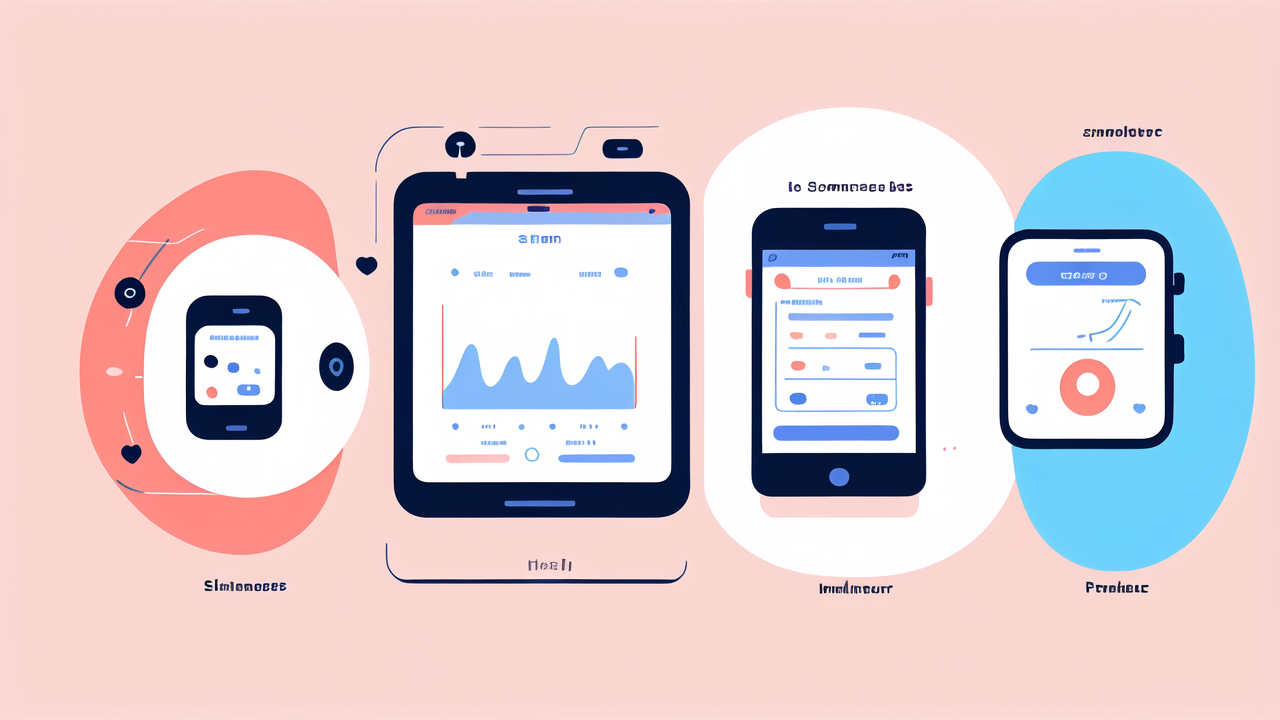The Evolution of Fitness Tracking Technologies
A Brief History of Fitness Wearables
Fitness wearables have come a long way since their inception. The journey began with simple pedometers. These basic devices counted steps and helped people track their daily activity levels. As technology advanced, heart rate monitors emerged. They offered more insight into workout intensity and overall health.

The next big leap came with the introduction of GPS-enabled devices. These allowed runners and cyclists to track their routes and speeds. Fitness bands then entered the market. They combined step counting with sleep tracking and basic smartphone notifications.
Each iteration brought new features and improved accuracy. The evolution of fitness wearables paved the way for today's smartwatches. These devices now offer a comprehensive approach to fitness tracking and overall health management.
The Rise of Smartwatches in the Fitness Industry
Smartwatches have revolutionized the fitness industry. They combine the features of fitness bands with the functionality of a mini-computer. This blend has made them invaluable tools for fitness enthusiasts and athletes alike.
The fitness capabilities of smartwatches are extensive. They can track steps, monitor heart rate, and measure sleep quality. Many models also offer GPS tracking, workout recognition, and even stress monitoring.
What sets smartwatches apart is their versatility. They're not just fitness devices. They can display notifications, play music, and even make calls. This all-in-one approach has made them popular among a wide range of users.
The fitness industry has embraced smartwatches. Many gyms and fitness apps now integrate with these devices. This integration allows for seamless tracking and data analysis.
Innovations Driving the Future of Fishing Tracking
The future of fitness tracking is exciting. Innovations are constantly pushing the boundaries of what's possible. One key area of development is sensor technology. New sensors can track more metrics with greater accuracy.
Artificial intelligence is another driving force. AI algorithms can analyze data and provide personalized insights. This can help users make more informed decisions about their fitness routines.
Biometric authentication is becoming more common. This allows for secure access to personal health data. It also enables features like contactless payments during workouts.
Battery life is improving, allowing for longer use between charges. Some smartwatches now offer weeks of battery life. This makes them more practical for continuous wear and tracking.
Lastly, integration with other smart devices is expanding. Smartwatches can now connect with smart home devices, cars, and more. This creates a more seamless fitness experience across all aspects of life.
Maximizing Efficiency with Smartwatch Fitness Features
Smartwatches as Personal Trainers: An Overview
Smartwatches have evolved into powerful personal trainers on your wrist. They offer a range of features that can guide and motivate you through your fitness journey. These devices can create personalized workout plans based on your goals and fitness level.

Many smartwatches now include built-in coaching features. These can provide real-time feedback on your form and technique. They can also suggest when to push harder or take a break. This guidance helps users maximize their workout efficiency.
Smartwatches can track your progress over time. They show improvements in various metrics like speed, endurance, and strength. This data can be motivating and help you stay committed to your fitness goals.
Some advanced models even offer voice coaching. This feature can give you audio cues and encouragement during your workout. It's like having a personal trainer with you at all times.
Advanced Metrics and Analytics in Smartwatch Fitness
Smartwatches offer a wealth of advanced metrics and analytics. These go far beyond simple step counting. Heart rate variability, VO2 max, and recovery time are just a few examples. These metrics provide deeper insights into your overall fitness and health.
Many smartwatches now use AI to analyze your data. They can spot trends and patterns in your fitness journey. This analysis can help predict things like your risk of injury or potential performance plateaus.
Sleep tracking has also become more advanced. Smartwatches can now analyze sleep stages and quality. This data can be linked to your workout performance, helping you understand the importance of rest.
Some devices offer stress tracking features. These monitor your heart rate and other indicators to gauge stress levels. This information can help you manage stress and improve overall well-being.
Smartwatches can also track your nutrition and hydration. Some models allow you to log meals or remind you to drink water. This holistic approach helps you manage all aspects of your health.
The Role of Integration in Enhancing Workout Routines
Integration is key to enhancing workout routines with smartwatches. These devices can connect with a wide range of fitness apps and equipment. This allows for a more comprehensive and seamless fitness experience.
Many smartwatches can sync with gym equipment. This enables accurate tracking of metrics like distance, speed, and resistance. The data from your treadmill or stationary bike can be automatically logged in your smartwatch.
Music integration is another important feature. Many smartwatches allow you to control your music directly from your wrist. Some even offer onboard storage for offline playback. This eliminates the need to carry a separate device for music during workouts.
Smartwatches can also integrate with smart home devices. You can control your smart lights or thermostat from your watch. This allows you to set the perfect workout environment without interrupting your session.
Social features are becoming more common. Many smartwatches allow you to share your achievements or compete with friends. This social aspect can provide extra motivation and accountability.
Implementing Smartwatches for Professional Fitness Success
Case Studies of Successful Fitness Programs with Smartwatches
Many fitness professionals have successfully incorporated smartwatches into their programs. One notable case is a running coach who used smartwatches to monitor her clients' progress. She was able to track their heart rates, pace, and distance in real-time.

This data allowed her to make immediate adjustments to training plans. She could see when a client was pushing too hard or not hard enough. As a result, her clients saw significant improvements in their running performance and overall fitness.
Another case involved a strength training program at a local gym. The trainers used smartwatches to track clients' rest periods and heart rate recovery. This data helped them optimize workout intensity and rest times for each individual.
A yoga studio also found success with smartwatches. They used the devices to monitor students' heart rates during different poses. This helped instructors guide students to achieve the right balance of effort and relaxation.
Smartwatches in Various Fitness Settings: From Gym to Outdoors
Smartwatches have proven versatile across various fitness settings. In the gym, they can track different types of workouts. From weightlifting to cardio, smartwatches can provide accurate data for each activity.
Many smartwatches offer specific modes for different gym equipment. This allows for precise tracking on treadmills, ellipticals, and rowing machines. Some can even count reps during strength training exercises.
Outdoors, smartwatches truly shine. They use GPS to track routes for running, cycling, or hiking. Many models are water-resistant, making them suitable for swimming and water sports.
For team sports, smartwatches can track player movements and exertion levels. This data can help coaches optimize training and game strategies. Some watches even offer specific modes for sports like tennis or golf.
Future Trends in Smartwatch Fitness and Wearable Technology
The future of smartwatch fitness looks promising. One emerging trend is the integration of more advanced health monitoring features. This includes blood oxygen level tracking and even ECG capabilities.
Artificial intelligence will play a bigger role in fitness tracking. AI could provide more personalized workout recommendations based on your data. It could also predict potential health issues before they become serious.
Virtual and augmented reality may soon be incorporated into smartwatches. This could create immersive workout experiences or provide real-time form corrections.
Battery technology is also improving. Future smartwatches may last weeks or even months on a single charge. This would allow for truly continuous health and fitness monitoring.
Lastly, we may see more integration with other wearables. Smartwatches could work with smart clothing or other sensors for even more accurate tracking.




Leave a comment
This site is protected by hCaptcha and the hCaptcha Privacy Policy and Terms of Service apply.